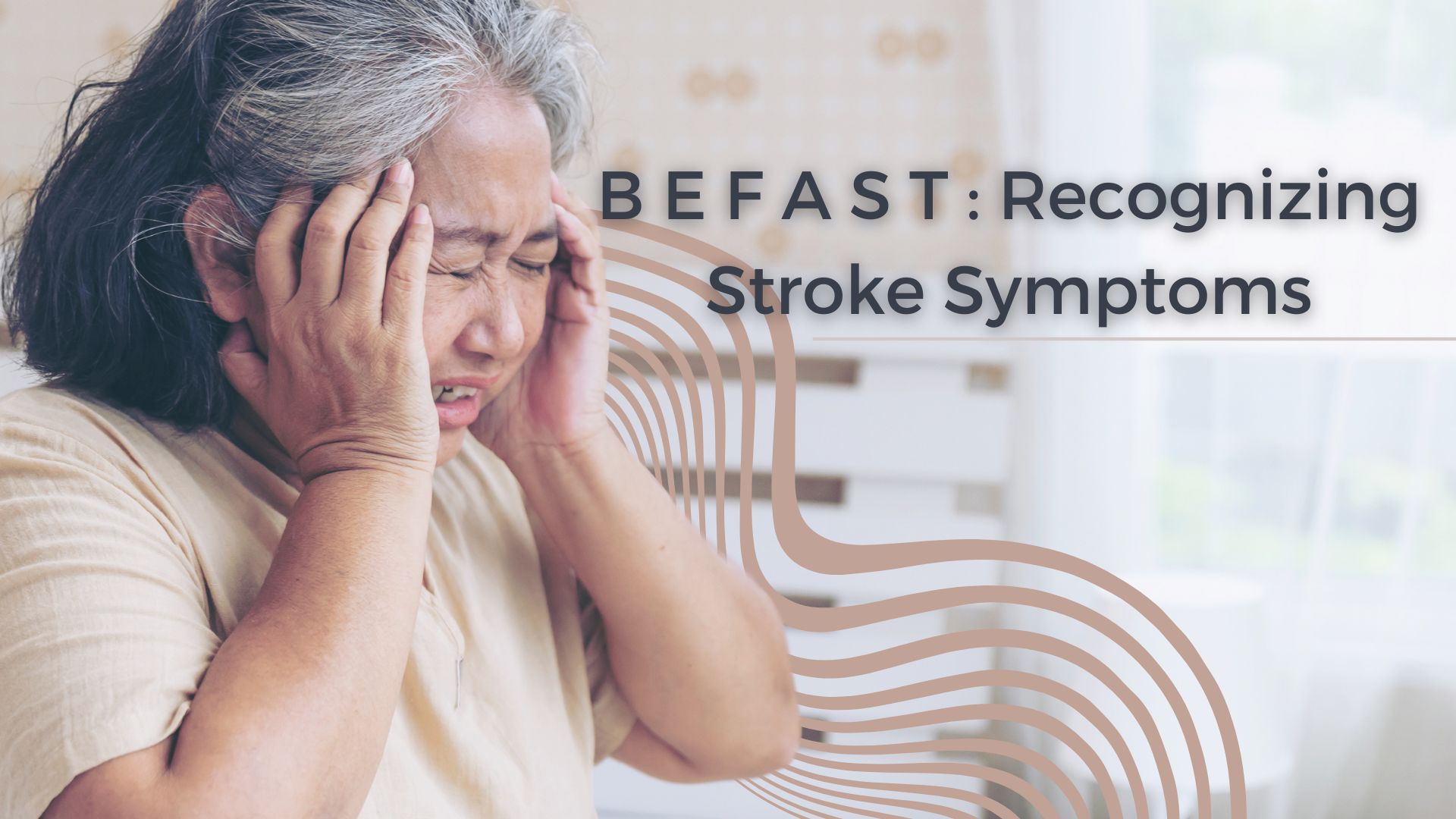
B E F A S T : Erkennen von Schlaganfallsymptomen
Schlaganfall oder zerebrovaskuläre Erkrankungen gehören zu den führenden Ursachen für Tod und Behinderung weltweit, wobei die Prävalenz weiter zunimmt. Laut der World Stroke Organization (WSO) erleidet 1 von 4 Menschen in seinem Leben einen Schlaganfall. Prävention und Gesundheitsbewusstsein sind entscheidend, um Risiken zu verringern und effektiv auf Schlaganfälle zu reagieren.
Schlaganfall, auch als zerebrovaskuläre Erkrankung bekannt, ist eine der Hauptursachen für Tod und Behinderung weltweit, mit einer ständig steigenden Prävalenz. Laut der World Stroke Organization (WSO) erleidet jeder Vierte im Laufe seines Lebens einen Schlaganfall. Prävention und Gesundheitsbewusstsein sind entscheidend, um Risiken zu reduzieren und effektiv auf Schlaganfälle zu reagieren.
BEFAST: Wichtige Indikatoren für Schlaganfallsymptome
B E F A S T ist ein Merkzettel, der dazu dient, die Anzeichen und Symptome eines Schlaganfalls effizient zu erkennen. Das Erkennen dieser Symptome und eine schnelle Einweisung des Patienten in ein Krankenhaus können die Genesungschancen verbessern und Komplikationen verringern.
B – Balance
Plötzlicher Verlust des Gleichgewichts, Schwindel oder unsicheres Gehen.
E – Eyes
Sehprobleme, wie Doppelsehen, verschwommenes Sehen oder teilweiser Verlust des Sehvermögens auf einem oder beiden Augen.
F – Face
Gesichtslähmung oder ein ungleichmäßiges Lächeln, erkennbar, wenn man die Person bittet zu lächeln.
A – Arms
Schwäche, Taubheitsgefühl oder die Unfähigkeit, einen Arm oder ein Bein auf einer Körperseite zu heben.
S – Speech
Verwaschene oder unverständliche Sprache, Schwierigkeiten beim Sprechen oder Verstehen von Sprache.
T – Time
Zeit ist entscheidend! Wenn eines dieser Symptome plötzlich auftritt, sofort medizinische Hilfe in Anspruch nehmen. Verzögerungen können zu dauerhaften Hirnschäden führen.
Dringende Behandlung rettet Leben
Die Behandlung von Schlaganfällen erfordert Schnelligkeit. Patienten, die innerhalb des goldenen Zeitfensters von 4,5 Stunden (270 Minuten) behandelt werden, haben eine signifikant höhere Chance auf Genesung im Vergleich zu jenen, die verzögert versorgt werden. Bei ischämischen Schlaganfällen kann die Verabreichung von gerinnungsauflösenden Medikamenten den Blutfluss wiederherstellen und weitere Hirnschäden verhindern. Eine rasche Behandlung reduziert nicht nur Komplikationen, sondern minimiert auch das Risiko dauerhafter Behinderung.
Fortschrittliche Schlaganfallversorgung im Phyathai Nawamin Hospital
Das Phyathai Nawamin Hospital bietet umfassende Schlaganfallversorgung mit einem spezialisierten Team von Neurologen und fortschrittlicher Medizintechnik. Ein herausragendes Werkzeug ist das Bi-Plane DSA, das hochauflösende, dreidimensionale Bilder der Blutgefäße produziert. Diese Technologie ermöglicht es Ärzten, Anomalien wie Blockaden oder Rupturen in Blutgefäßen genau zu erkennen, was die Wirksamkeit der Behandlung erhöht.
Wenn Sie oder jemand, den Sie kennen, eines der BEFAST-Symptome aufweist, zögern Sie nicht. Besuchen Sie das Phyathai Nawamin Hospital oder rufen Sie 1772 für sofortige Hilfe oder Beratung an.
Für weitere Informationen:
Phyathai Nawamin Hospital Artikel
Artikel in dieser Kategorie werden von unserem Redaktionsteam verfasst, um Sie über die neuesten Nachrichten aus dem Gesundheitswesen und Medizintourismus zu informieren.

